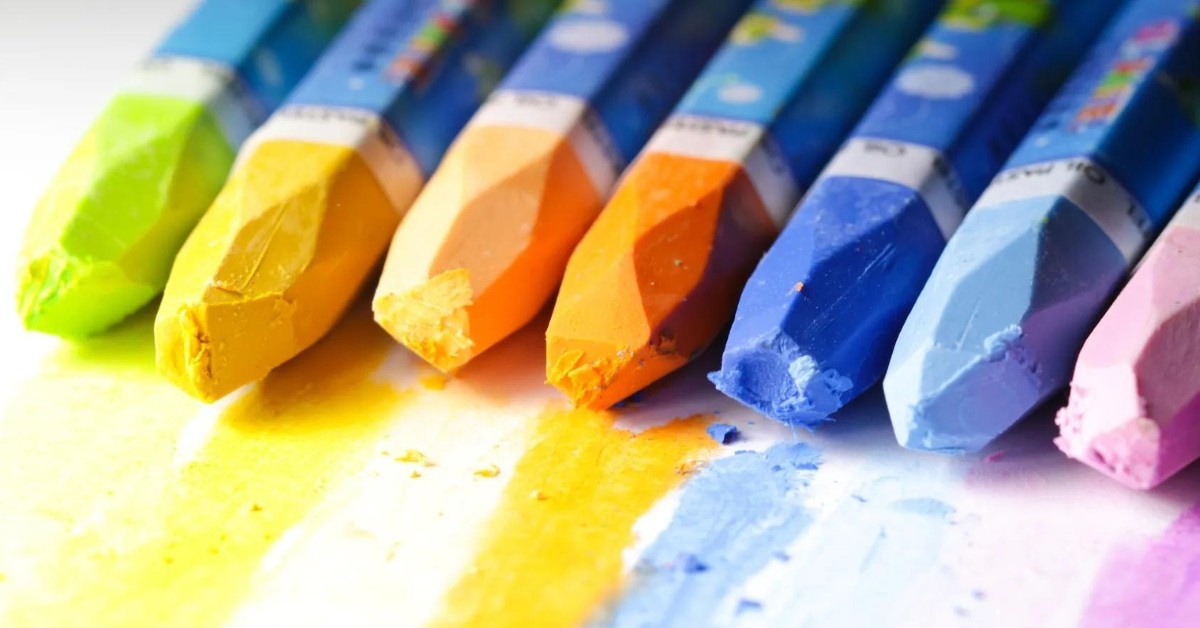Oil pastels are a unique and versatile medium that holds a special place in the world of art. Often confused with or mistakenly referred to as “wax crayons,” oil pastels offer a completely different experience for artists, from their texture to their application. The key ingredient that sets oil pastels apart is oil, which gives them their distinctive softness, blending capabilities, and vibrant color. This article delves deep into the characteristics of oil pastels, their history, how they compare to other mediums, and tips for using them effectively.
What Are Oil Pastels?
Oil pastels are a type of drawing medium made up of pigment, wax, and non-drying oil. The pigment provides the color, the wax gives the pastel its shape, and the oil imparts the creamy texture that makes oil pastels so unique. Unlike traditional pastels, which are made with a binder that dries and hardens, the oil in oil pastels keeps them soft and malleable. This allows artists to blend colors smoothly and create rich, layered effects that are difficult to achieve with other mediums.
The Difference Between Oil Pastels and Wax Crayons
While oil pastels and wax crayons may look similar at first glance, they are very different in composition and use. Wax crayons, often associated with children’s art, are harder and less versatile than oil pastels. They are made primarily of pigment and wax, without the addition of oil, which means they do not blend well and tend to produce a more opaque, less vibrant finish. In contrast, oil pastels are favored by artists of all levels for their ability to produce bright, bold colors and smooth transitions between shades.
The History of Oil Pastels
Oil pastels are a relatively modern medium, having been developed in the 20th century. They were first created in Japan by the company Sakura in 1925, with the intention of providing a less dusty alternative to traditional pastels. The medium quickly gained popularity among artists for its ease of use and vibrant results. Over the years, oil pastels have been embraced by both professional artists and hobbyists, becoming a staple in many art kits around the world.
The Unique Qualities of Oil Pastels
One of the main attractions of oil pastels is their versatility. Because they remain soft and pliable, they can be used in a variety of ways, from detailed line work to broad, expressive strokes. Here are some of the unique qualities that make oil pastels stand out:
Blending Ability
Oil pastel’s are known for their exceptional blending capabilities. Artists can use their fingers, blending stumps, or even a brush dipped in solvent to blend colors seamlessly. This makes it possible to create smooth gradients, soft transitions, and subtle shading with ease.
Vibrancy and Opacity
The oil content in oil pastels helps to enhance the vibrancy of the colors, making them appear more intense and saturated. Additionally, oil pastels are highly opaque, which means they can be layered on top of each other without losing their brilliance. This quality is particularly useful for creating highlights and adding depth to a piece.
Texture and Effects
Oil pastels can be used to create a wide range of textures and effects. Artists can achieve a smooth, polished look by blending the pastels, or they can create rough, textured effects by applying the pastels directly to the paper with a heavy hand. By using different tools and techniques, it’s possible to produce a variety of finishes, from soft and velvety to bold and textured.
Techniques for Using Oil Pastels
To get the most out of oil pastels, it’s important to understand the different techniques that can be used with this medium. Whether you’re a beginner or an experienced artist, experimenting with these techniques can help you discover new ways to express your creativity.
Layering and Blending
One of the most common techniques with oil pastels is layering and blending. Start by applying a base layer of color, then build up additional layers, blending them together to create smooth transitions. You can use your fingers, a blending stump, or a brush with a small amount of solvent to blend the colors together. This technique is ideal for creating realistic shading and depth in your artwork.
Sgraffito
Sgraffito is a technique where you scratch through the top layer of oil pastel to reveal the layer underneath. This can be done using a variety of tools, such as a toothpick, palette knife, or even the tip of a pencil. Sgraffito is great for adding texture and intricate details to your work, especially in areas where you want to create contrast between colors.
Impasto
Impasto is a technique where you apply the oil pastels thickly to create a textured, three-dimensional effect. By pressing down hard and layering the pastels, you can build up a thick surface that stands out from the paper. This technique is particularly effective for adding highlights and emphasizing certain areas of your artwork.
Solvent Techniques
Using a solvent, such as turpentine or mineral spirits, can help to thin out the oil pastels and create a smoother, more painterly effect. You can dip a brush in the solvent and use it to blend the pastels on the paper, or you can mix the solvent directly with the pastels before applying them. This technique is useful for creating soft backgrounds, blending large areas of color, or adding a wash of color over a larger section of your artwork.
Mixing with Other Mediums
Oil pastels can be used in combination with other mediums to create mixed media artwork. For example, you can use oil pastels on top of acrylic paint, watercolor, or ink to add highlights and details. Because oil pastels are opaque, they can be layered over other mediums without losing their vibrancy. Experimenting with mixed media techniques can open up new possibilities for your artwork and allow you to create unique, multi-dimensional pieces.
Choosing the Right Materials
When working with oil pastels, the quality of your materials can make a big difference in the final outcome of your artwork. Here are some tips for choosing the right materials:
Selecting Oil Pastels
Oil pastels come in a wide range of qualities, from student-grade to professional-grade. While student-grade oil pastel’s are more affordable, they tend to be less vibrant and more difficult to blend. Professional-grade oil pastel’s on the other hand, are more expensive but offer richer colors, better blending capabilities, and a smoother application. Brands like Sennelier, Holbein, and Caran d’Ache are known for their high-quality oil pastel’s and are favored by many professional artists.
Choosing Paper
The type of paper you use can also affect the final result of your artwork. Oil pastel’s work best on heavy, textured paper that can handle the weight of the pastels and the pressure of blending. Look for paper that is at least 160 gsm (grams per square meter) or thicker. Some artists prefer to use special pastel paper, which has a textured surface designed to hold the pastels in place. You can also experiment with different types of paper, such as watercolor paper, canvas, or even sandpaper, to achieve different effects.
Additional Tools
In addition to oil pastel’s and paper, there are a few other tools that can enhance your oil pastel artwork. Blending stumps, palette knives, and brushes can be used to blend and manipulate the pastels. A fixative spray can help to set your artwork and prevent smudging, especially if you plan to layer multiple colors or work on a large piece.
Common Challenges and How to Overcome Them
Like any medium, oil pastel’s come with their own set of challenges. Here are some common issues artists face when working with oil pastel’s and tips on how to overcome them:
Difficulty in Blending
One of the most common challenges with oil pastel’s is achieving a smooth blend. If you’re having trouble blending the pastels, try warming them up slightly by holding them in your hand or placing them under a lamp. You can also experiment with different blending tools, such as your fingers, a blending stump, or a brush with solvent.
Smudging
Oil pastel’s can be prone to smudging, especially if you’re working on a large piece or using multiple layers of color. To prevent smudging, work from the top of your paper downwards, and use a fixative spray to set your artwork as you go. You can also place a piece of paper under your hand while you work to protect the surface of your artwork.
Uneven Application
If your oil pastel’s are applying unevenly, it may be due to the texture of your paper or the quality of the pastels. Try using a smoother, heavier paper, or invest in higher-quality oil pastel’s for a more even application. You can also apply a base layer of pastel and then blend it out with a solvent to create a smoother surface for additional layers.
The Joy of Creating with Oil Pastels
Despite the challenges, working with oil pastel’s can be an incredibly rewarding experience. The vibrant colors, smooth blending, and versatile techniques make oil pastel’s a favorite among artists of all levels. Whether you’re creating a detailed portrait, a bold landscape, or an abstract piece, oil pastel’s offer endless possibilities for expression.
Experiment and Explore
One of the best ways to get the most out of oil pastel’s is to experiment with different techniques and materials. Try mixing oil pastel’s with other mediums, exploring different types of paper, and playing with various blending methods. Don’t be afraid to make mistakes—some of the most exciting discoveries in art come from experimentation.
Practice and Patience
Like any skill, mastering oil pastel’s takes practice and patience. The more you work with them, the more comfortable you’ll become with the medium, and the more you’ll discover about your own artistic style. Take your time, enjoy the process, and let your creativity guide you.
Conclusion
Oil pastel’s are a versatile and vibrant medium that offer a unique experience for artists. Whether you’re a beginner or a seasoned artist, there’s always something new to discover with oil pastels. From their blending capabilities to their rich colors and textures, oil pastel’s provide endless opportunities for creativity and expression. So pick up a set of oil pastel’s choose your favorite paper, and start exploring the world of oil pastel’s today!







